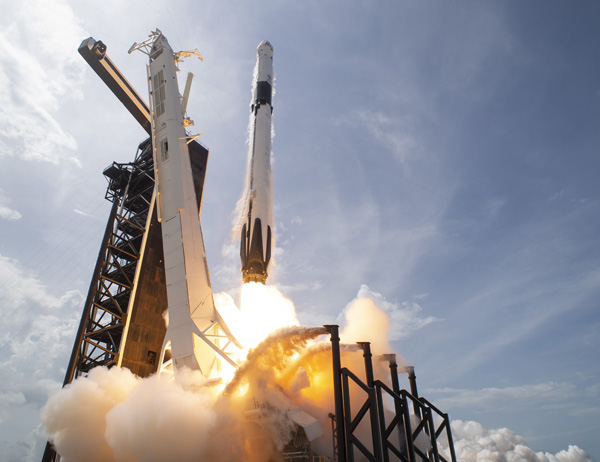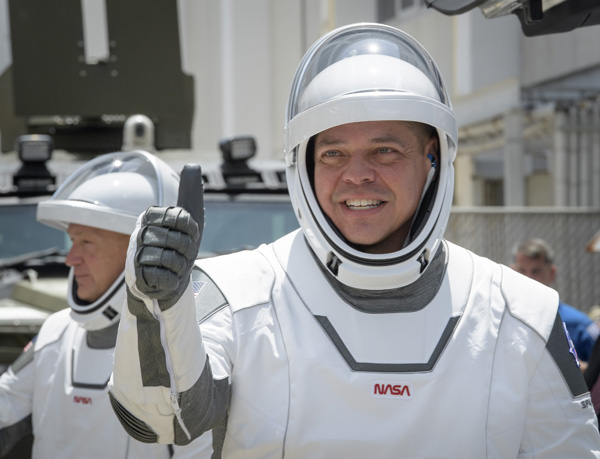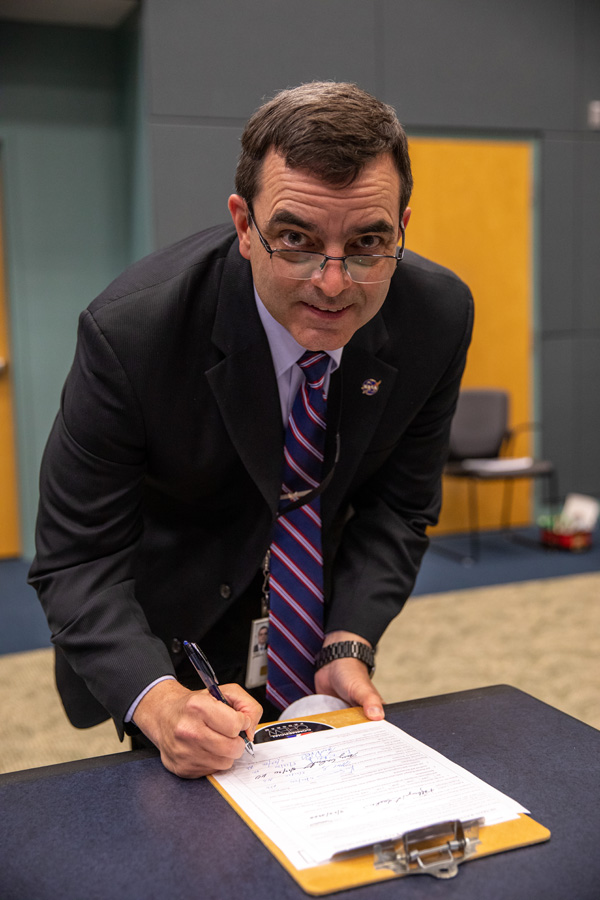The sky is not the limit
Posted: September 23, 2020
ATSU-KCOM alumnus J.D. Polk, DO, MS, MMM, CPE, FACOEP, FAsMA, ’93, looked on from NASA’s Kennedy Space Center Launch Control. The SpaceX Crew Dragon spacecraft carrying NASA astronauts Robert Behnken and Douglas Hurley was racing into the heavens, marking the first time since 2011 Americans had been launched into space from American soil.
The May 30 launch was an important milestone in a new chapter for NASA, one including a return of astronauts to the moon in 2024 and eventually a first visit to Mars.
This is why Dr. Polk, now NASA’s chief health and medical officer, returned. He’d been with NASA as chief of space medicine before leaving to work on deterrents of weapons of mass destruction and counterterrorism at the Department of Homeland Security, and most recently serving as dean of medicine for Des Moines University’s College of Osteopathic Medicine.
Then NASA came calling with what he called a “Godfather” offer. It was something he could not refuse.
“How many times in your lifetime do you get to work on landing people on the moon and Mars?” Dr. Polk said. “This is a once-in-a-lifetime deal.”
His current role is one of the highest in both NASA and the federal government, and it carries a wide range of responsibilities. He works with engineers on building spacecraft to protect astronauts and contributes to strategic aspects for missions, looking at mission length and health implications on the crew.

Perhaps the least enjoyable part of his job comes with decisions regarding astronauts’ flight status. He’s the final authority.
“Those are not enviable decisions when you have to tell somebody they are not flying,” Dr. Polk said.
Lately, he’s added a new task, one he refers to as “pandemic czar.” He and his medical teams have been leading NASA’s efforts throughout the COVID-19 pandemic, altering processes in the NASA/SpaceX launch lead-up. For example, shift changes were typically handled face to face, with the new group receiving an update and then taking the control room chairs. To allow social distancing, NASA used multiple control rooms simultaneously. Each new shift would essentially take over a vacant room.
“If you get somebody who is sick and they spread it and you have to self-quarantine a dozen people, that might be OK in some circumstances,” Dr. Polk said, adding with a laugh, “but when it’s in Mission Control or Launch Control and you have a multibillion-dollar space station in orbit, probably not so much.”
NASA also added steps to isolate or distance astronauts during mission training, but much of the final quarantine procedures were already in place. NASA wants astronauts to be in perfect health for their missions, as orbiting the Earth at more than 17,500 mph isn’t an ideal place for a cold.
“It’s tough to clear your ears and nose if you’re doing a spacewalk,” Dr. Polk said.
Dr. Polk and NASA are continuing work on the Artemis program, which is scheduled to land Americans on the moon for the first time since the Apollo program ended in 1972. As one of the few remaining generations at NASA who remembers those moon missions, Dr. Polk feels Artemis will re-energize younger generations, and its necessary technological advances will have impacts far beyond space flight.

During Apollo, NASA developed fuel cell technology, which now powers electric cars. Thermometers reading temperatures by bouncing thermograms off foreheads came from NASA doing the same to planets in our solar system. The impeller used with end-stage heart failure patients is a smaller version of what was developed and used in space shuttle main engines during launch.
“Most people wouldn’t think an end-stage heart failure patient bridging to transplant owes anything to the space shuttle main engine, but they do,” Dr. Polk said.
There’s also important scientific research and development ongoing at the International Space Station.
“We’ve got Parkinson’s research going on,” he said. “We’ve done vaccine research, stem cell research on cardiac cells, a whole plethora of different research. The average medical student may never know when this therapy or vaccine or medication comes along, it owes some part of its existence to human space flight.”
He’s hoping more medical students become aware of the opportunities within their grasp, specifically more osteopathic medical students. Dr. Polk had been accepted at several MD and DO schools and chose the DO path because of its holistic approach. He’s happy to report he’s no longer unique at NASA, with several more DOs in various roles, but he hopes more students realize the different paths their careers can take.
“I’m looking forward to the first DO astronaut,” Dr. Polk said. “It won’t be me. I’m getting too old for that. But I’m hoping it’s an ATSU grad who is the first DO astronaut.
“I’m hoping the students expand their horizons and definitions of what a physician can do. Hopefully, if nothing else, I’m proof the sky is not the limit.”